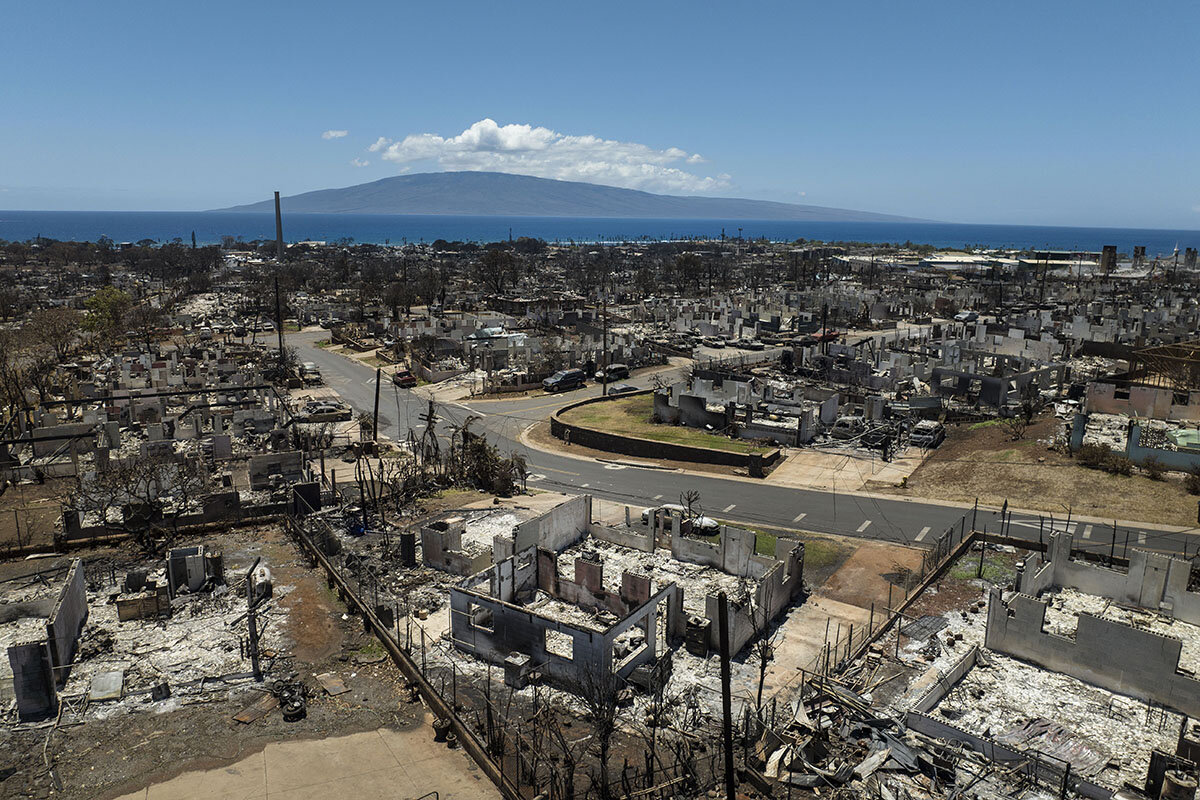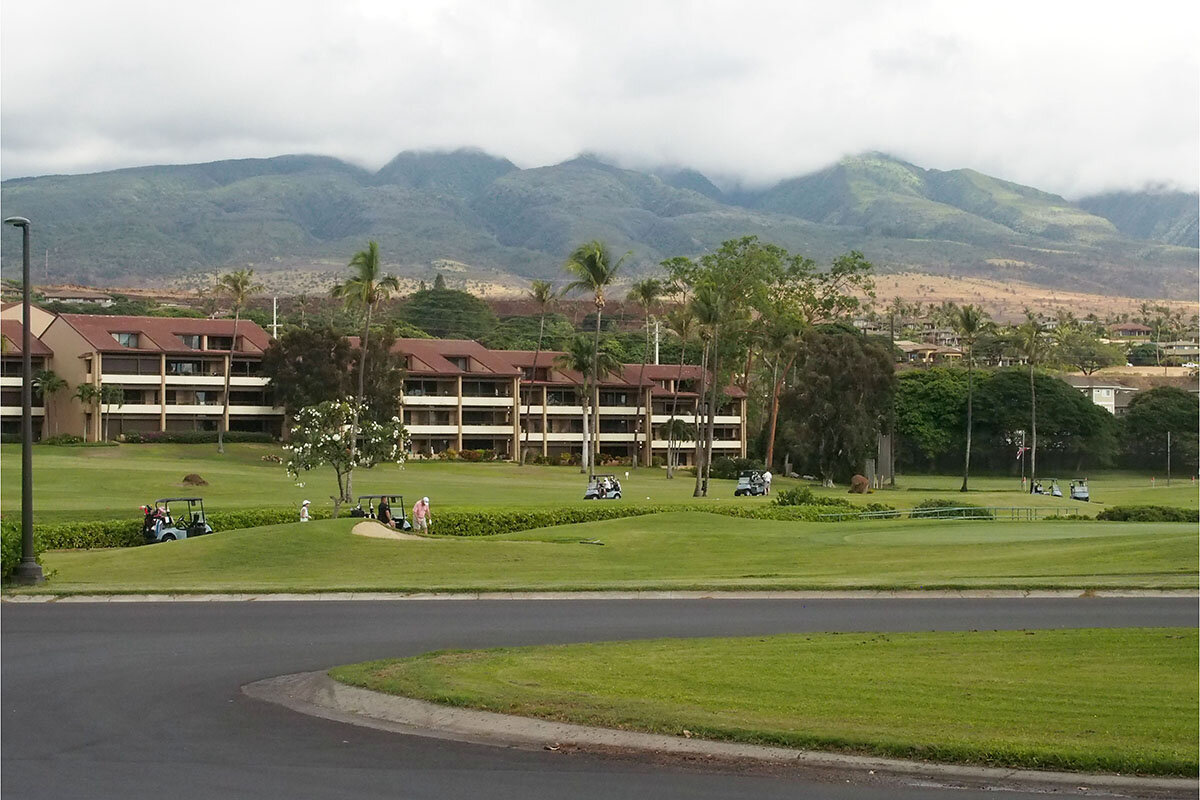West Maui reopens to tourism after wildfires. Is it too soon?
Loading...
| Lahaina, Hawaii
Heidi Denecke feeds her animals at dusk. As the sun dips below the neighboring island of Lanai, red shadows abound on Maui Animal Farm. Up here, it’s easy to forget. Almost.
Downtown Lahaina sits just a mile down the hill. Nearly three months ago, Ms. Denecke watched the flames consume the town. When a police officer ordered her to evacuate, she piled bunnies into her truck bed, wrote her phone number on her horses, and opened the gate.
Though her property did not burn and she recovered her horses, Ms. Denecke, like the rest of Maui, is still contending with the ashes. “It’s a slower coming-back process,” she says. “But it’s going to come back, I think.”
Why We Wrote This
A story focused onWest Maui is open to tourism after August wildfires devastated Lahaina. Residents are trying to find an equilibrium between meeting pressing economic needs and caring for each other.
Maui is tense right now, a combination of disjointed worlds. As displaced families still actively grapple with the tragedy that unfolded, a community struggles to find the right pace between reopening to the main driver of the economy – tourism – and retaining a space for its own recovery and needs.
Lionel Pascual and his family lost their Lahaina home in the Aug. 8 fires. Since then, they’ve moved nine times, from hotel to hotel. Currently, the Pascuals are staying at Papakea Resort. They’ve been told by the Federal Emergency Management Agency, which is providing them and other survivors with temporary housing, that they can remain there until Nov. 30. But they’re not sure where they will be sent next.
“The recovery effort is going very, very slow,” explains Mr. Pascual. “There’s no places for us to rent; that’s the biggest thing.”
The Pascuals are only a few of the estimated 6,800 displaced residents across 34 hotels in West Maui, says Tamara Paltin, Maui County Council member for Lahaina. She worries that more visitors could exacerbate difficulties for a community still trying to find its feet. Between residents’ living in hotels and searching for jobs, and losses in infrastructure, “it’s an unstable situation,” says Ms. Paltin.
On Oct. 6, Ms. Paltin and the Maui County Council unanimously passed a resolution asking to postpone the Oct. 8 date set for Phase 1 of Hawaii’s plan to begin reopening West Maui. An online petition started by a local group, Lahaina Strong, drew 17,000 signatures in favor of delaying.
Hawaii Gov. Josh Green stuck with reopening plans. Oct. 8 came and went. Several hotels north of Lahaina opened their doors to tourists. For a few weeks, no one really came.
The economic downturn following the August fires was sharper than many Maui businesses anticipated. Estimates project that the Maui economy won’t recover to pre-Lahaina-fire levels until 2026, with accommodations, food services, and retail hit the hardest.
Following the fires, unused rental cars piled up on the airport lawn. Whalers Village, one of the most popular tourist areas, looked like a nightclub on a Sunday morning. The Kaanapali Golf Courses saw 10% of their normal traffic.
The decline in tourists affected the whole island. Ed O’Malley runs Kuau Store in Paia on Maui’s north coast. The store operated at almost a 30% profit loss in September.
“Saying, ‘Take all the tourists out of Maui’ is like saying, ‘Take all the restaurants out of New York City,’” says Mr. O’Malley.
Signs of recovery
Recovery has already started to happen though. As of Nov. 5, the number of daily domestic incoming flight passengers to Maui had risen to just above 4,000 – down from the nearly 7,500 in early August, but a marked improvement from right after the fires, which bottomed out below 2,000 passengers.
Visitor numbers are expected to further increase. Phases 2 and 3 of reopening, encompassing the rest of the hotels and resorts north of Lahaina, began on Nov. 1.
Whether tourists should return remains a matter of controversy. Displaced residents still line up out the door of the Lahaina Civic Center waiting to receive Red Cross support. Community donation hubs are active, with one volunteer estimating that hundreds of residents come by daily seeking water and ice.
Cade Watanabe occupies the highest elected position for the Unite Here Local 5 union, which represents over 1,000 employees in Maui, including 150 who “lost everything” in Lahaina.
“We want tourism to reopen. Our members need their jobs,” says Mr. Watanabe. “But at the same time, I think the community will be more supportive of the reopening if the real needs of the community on [the] island are being met.”
The Hawaii Tourism Authority urges Maui visitors to pack “patience and grace” and not to ask residents about their disaster experience.
At Hula Grill by West Maui’s Kaanapali Beach, sunburned visitors chat over drinks.
“You don’t know what to do. You stay out of the way mostly,” says Mike, visiting Maui from New Mexico for the first time with his wife. “The locals are not very friendly. They’re in trauma; what do you expect?
“You know it’s sad; you drive by it every day,” says Mike, who declined to give his last name.
By “it,” Mike means Lahaina town, just a few minutes down the road.
Lahaina is bandaged, its wounds still visible but partially obscured. The town is closed. Construction fences line the Lahaina Bypass Road, but the burned coconut trees still stick out. Police cars, concrete barriers, and handwritten signs mark the outline of the decimated areas. Officials say 97 people lost their lives and over 2,000 homes and businesses burned in the infernos.
“I vote for less tourism”
While many Maui residents seem to espouse a necessary-but-not-ideal mindset about tourism, several students from Lahainaluna High School voiced a different message.
“Honestly, I vote for less tourism,” said one of the students as he soaped down his wetsuit hood and slipped it over his head, getting ready to go spearfishing. “Right now is just not the right time.”
The students were confident that they could sustain themselves off the land and ocean.
Worries about water and land, both increasingly finite resources on Maui, continue to be major points of dialogue.
The Lahaina fires and subsequent debate over reopening “revealed the cracks in the economic system,” says Malia Akutagawa, an associate professor of law and Hawaiian studies at the University of Hawaii at Manoa. True recovery, she says, should be consistent with the Hawaiian ethic of sustainability.
“The Hawaiian way of doing things is prevention,” says Professor Akutagawa, enacting “care for the aina [land], rather than extracting from aina.”
While discussions over tourists, resources, short-term rentals, and long-term effects will continue, the people most affected are those like Mr. Pascual who call Lahaina home:
“You try to move on. You can’t forget. You do the best you can.”







